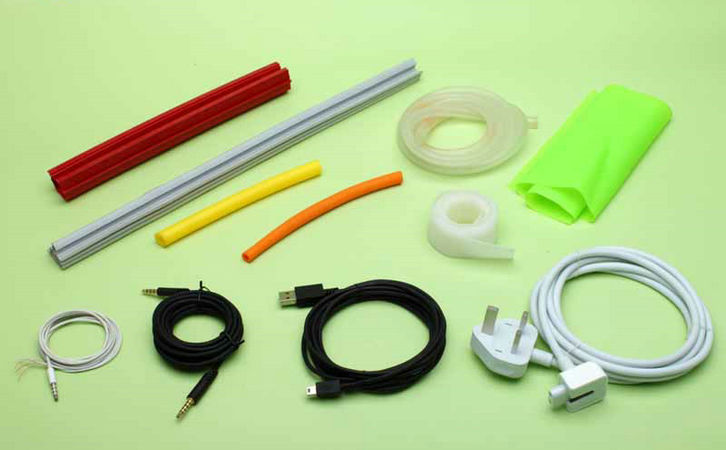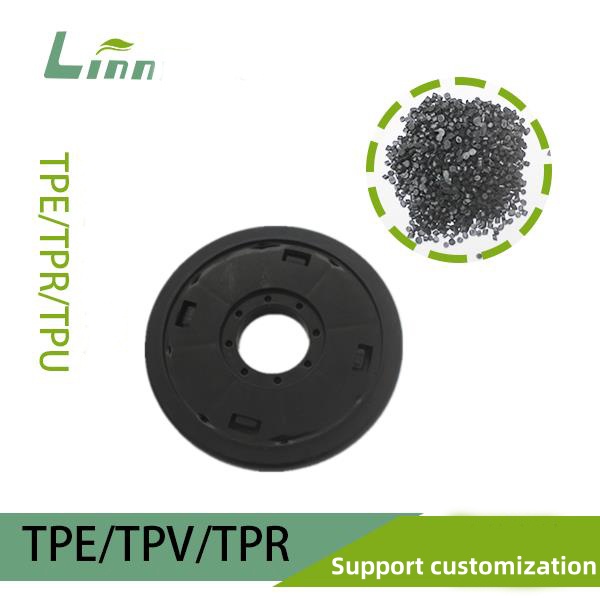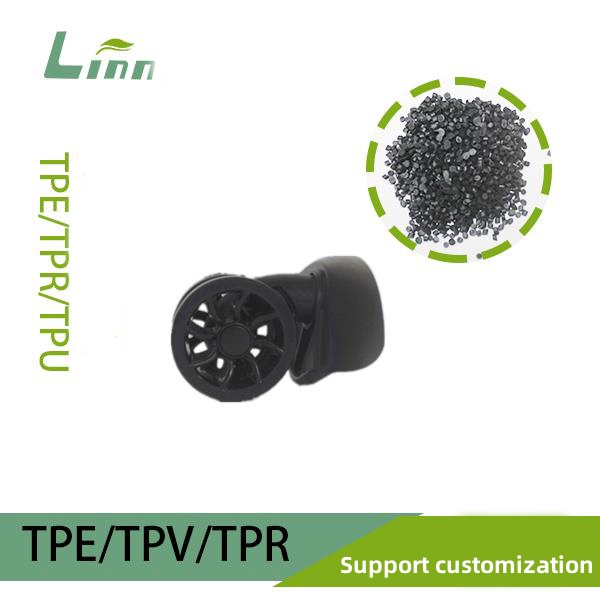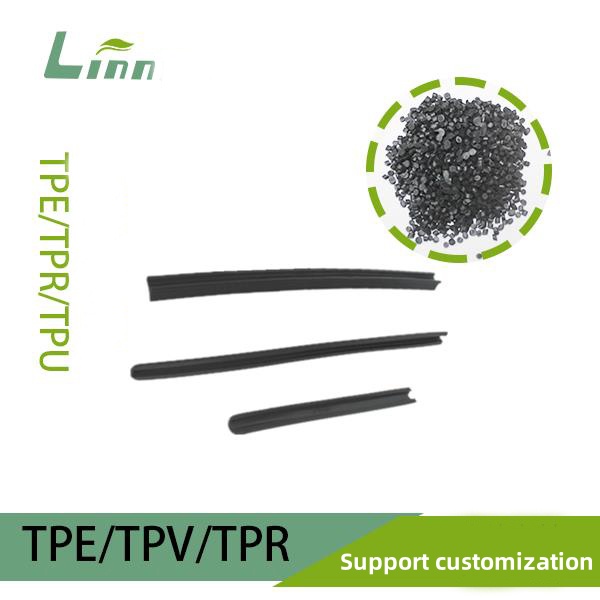As someone who’s been immersed in the polymer materials industry for years, I often get asked all sorts of questions about material modifications. One common yet tricky question is: Can slip agents be added to TPR overmolded ABS? This seemingly straightforward question actually involves a lot of technical details and real-world application scenarios. Today, I’m going to break it down for you in plain language, diving into the nitty-gritty of material science to help you fully understand this topic.
What Is TPR Overmolded ABS?
Before we dive into slip agents, let’s first clarify what TPR overmolded ABS is. TPR (Thermoplastic Rubber) is a material that combines the elasticity of rubber with the processability of plastic, making it ideal for overmolding applications. ABS (Acrylonitrile Butadiene Styrene), on the other hand, is a high-strength, tough engineering plastic commonly used in electronic device casings, automotive parts, and more.
TPR overmolded ABS refers to a composite material created through dual-shot or secondary injection molding, where TPR soft rubber is overmolded onto an ABS hard plastic substrate. This results in a product with both a rigid structure and a soft, comfortable feel. This material combo is incredibly popular in phone cases, tool handles, and electronic device buttons because it offers comfortable touch and durable performance.
Here’s the catch: the surface of TPR overmolded ABS can sometimes feel a bit “sticky,” especially in hot or humid environments or after prolonged use, where surface friction can affect user experience. This is where the idea of adding a slip agent comes in to make the surface smoother. Let’s explore this further.

What Are Slip Agents? Their Role in TPR Overmolded ABS
Slip agents are additives designed to reduce the surface friction coefficient of materials. They make surfaces smoother, less sticky, improve hand feel, and can even extend product lifespan. Common slip agents include silicone-based (e.g., silicone oil, silanes), amide-based (e.g., erucamide, oleamide), fluorinated compounds, or wax-based additives. These are widely used in plastics and rubber processing, delivering great results in materials like PE, PP, and PVC.
In TPR overmolded ABS, slip agents serve several key purposes:
Improved Surface Feel: They reduce surface friction, making the product feel smoother and less sticky.
Enhanced Processing: During injection molding, slip agents improve TPR flowability, reduce mold sticking, and enhance demolding efficiency.
Increased Wear Resistance: Lower friction reduces surface wear over time.
Better User Experience: For items like handles or buttons that are frequently touched, a smooth surface elevates the product’s perceived quality.
Sounds like slip agents are a miracle solution for TPR overmolded ABS, right? Well, not so fast—let’s dig deeper.
Can Slip Agents Be Added to TPR Overmolded ABS?
The short answer is: Yes, but with caution! Adding slip agents to TPR overmolded ABS is technically feasible, but it requires careful consideration of several factors, including the type of slip agent, dosage, compatibility with the material, and its impact on the overmolding process and final product performance. Below—CENSORED—ere are some key points to keep in mind.
1. Compatibility with TPR
TPR is a thermoplastic elastomer, often based on SBS (Styrene-Butadiene-Styrene) or SEBS (Styrene-Ethylene-Butylene-Styrene). Different TPR formulations have varying compatibility with slip agents. For example:
Silicone-Based Slip Agents: Silicones (like silicone oil or silicone masterbatch) generally have good compatibility with TPR, dispersing evenly and providing long-lasting slip. However, excessive amounts may lead to surface bleed-out, affecting appearance or adhesion.
Amide-Based Slip Agents: Amides like erucamide are cost-effective and effective but may migrate to the surface at high temperatures, causing a “blooming” effect that impacts aesthetics.
Wax-Based Slip Agents: Polyethylene wax works with some TPR formulations but may not provide as lasting an effect as silicones.
My Experience: In my projects, I often lean toward silicone-based slip agents because they disperse well and are stable in TPR. However, the best choice depends on the specific TPR formulation and application—testing is key.

2. Impact on the Overmolding Process
The core of TPR overmolded ABS is the bond strength between TPR and ABS. Slip agents can affect this bond in several ways:
Surface Energy Changes: Slip agents may lower TPR’s surface energy, weakening the interfacial bond with ABS, which could lead to delamination over time.
Bleed-Out Issues: Some slip agents (like amides) may migrate to the surface during high-temperature molding or extended use, forming an “oily” layer that can compromise bonding.
Processing Temperatures: TPR overmolding ABS typically involves temperatures of 180-220°C. Slip agents must withstand these temperatures without degrading.
My Advice: Before adding slip agents, always conduct bond strength tests (e.g., peel strength tests). Start with a low dosage (0.5%-2%) to balance slip performance and bonding.
3. Effects on Final Product Performance
Slip agents can also impact other properties of the product, such as:
Appearance: Excessive slip agents may cause surface haze or bleed-out, affecting glossiness.
Weatherability: Some slip agents degrade under UV or high temperatures, shortening product lifespan.
Safety: For food-contact or medical applications, slip agents must comply with regulations like FDA or EU RoHS.
My Story: In a phone case project, we used 1.5% silicone masterbatch, achieving a smooth feel without compromising bond strength. But in another project, high doses of erucamide caused blooming after high-temperature testing, leading to customer complaints. Dosage control and formulation testing are critical!

Common Slip Agents and Their Suitability
To make things clearer, I’ve put together a table comparing common slip agents, their characteristics, pros, cons, and suitable applications for TPR overmolded ABS.
|
Slip Agent Type |
Characteristics |
Advantages |
Disadvantages |
Applications |
|---|---|---|---|---|
|
Silicone-Based (e.g., Silicone Oil, Masterbatch) |
High molecular weight, good dispersion, long-lasting |
Smooth feel, heat-resistant, minimal bleed-out |
Higher cost |
High-end electronics, automotive interiors |
|
Amide-Based (e.g., Erucamide) |
Low cost, effective slip |
Good processability, cost-effective |
Prone to blooming, may whiten surface |
Low-cost consumer goods, tool handles |
|
Wax-Based (e.g., Polyethylene Wax) |
Moderate cost, easy to process |
Improves flow, good demolding |
Less durable slip |
General consumer products, molded parts |
|
Fluorinated Compounds |
Very low friction, excellent weatherability |
Ultra-smooth surface, high heat resistance |
Very expensive, high processing demands |
Specialized high-performance applications |
Table Notes: The data is based on my project experience and industry standards like ASTM D1894 for friction coefficient testing. Always test based on your product’s needs and budget.
How to Properly Add Slip Agents?
If you decide to add slip agents to TPR overmolded ABS, here’s a practical step-by-step guide based on my experience:
Define Your Goals: Are you adding slip agents for better hand feel, easier demolding, or reduced wear? Different goals may require different agents.
Choose the Right Slip Agent: Select one compatible with your TPR base (SBS or SEBS) and application. Silicones or amides are often good starting points.
Conduct Small-Scale Tests: Start with 0.5%-2% in lab or small-batch production to evaluate slip, bonding, and processing.
Test Bond Strength: Use peel or tensile tests to ensure the slip agent doesn’t weaken TPR-ABS adhesion.
Perform Aging Tests: Expose samples to high heat and humidity (e.g., 85°C, 85%RH) to check for bleed-out or performance loss.
Fine-Tune the Formulation: Adjust the type and amount of slip agent to find the sweet spot.
Ensure Compliance: For food or medical applications, verify that the slip agent meets relevant standards.
My Tip: Pair slip agents with tougheners or compatibilizers (like maleic anhydride-grafted SEBS) to offset any loss in bond strength.

Precautions and Potential Risks
While slip agents offer many benefits, misuse can lead to problems. Here are some pitfalls I’ve encountered:
Overdosing: Too much slip agent can cause bleed-out, affecting appearance or subsequent coating/printing processes.
Compatibility Issues: Poorly matched slip agents may cause delamination or inconsistent performance.
Regulatory Restrictions: Some agents (e.g., fluorinated compounds) face strict regulations in certain industries—check in advance.
Cost Concerns: High-end slip agents like fluorinated compounds can drive up costs, impacting competitiveness.
A Lesson Learned: In an automotive handle project, we used a high dose of silicone slip agent, but after sun exposure, the surface showed slight bleed-out, affecting feel. Reducing the dose and adding a UV stabilizer solved the issue. Test, test, test!
Frequently Asked Questions
To wrap things up, here are some common questions about adding slip agents to TPR overmolded ABS, along with my answers to enhance your understanding.
Q1: Can TPR overmolded ABS work without slip agents?
A: Absolutely! If the product doesn’t need a super-smooth feel or isn’t used in sticky conditions, you may not need slip agents. But for better user experience or processing, they can be helpful.
Q2: Do slip agents affect the environmental friendliness of TPR overmolded ABS?
A: Some slip agents, like fluorinated compounds, may be restricted by environmental regulations, such as the EU’s REACH. For export products, choose RoHS or REACH-compliant agents and request compliance certificates from suppliers.
Q3: Are there ways to make TPR surfaces smooth without slip agents?
A: Yes! Adjusting the TPR formulation (e.g., adding zinc stearate or using high-molecular-weight SEBS) or polishing/plating the mold can improve surface feel, though the results may not be as pronounced as with slip agents.
Q4: Will slip agents affect the paintability of TPR overmolded ABS?
A: They can, especially silicones, which reduce surface energy and may lower paint adhesion. Surface treatments like plasma cleaning or low-migration slip agents can help.

Final Thoughts
In conclusion, adding slip agents to TPR overmolded ABS is feasible and can enhance surface feel and processing—but it’s not a one-size-fits-all solution. Choose the right slip agent, control the dosage, and test thoroughly to ensure compatibility, bonding, and performance. As a materials engineer, I’ve learned that every project has its quirks, and there’s no universal fix. So, whether you’re a newbie or a seasoned pro, test rigorously and learn from the results.
I hope this article has cleared up your questions about slip agents in TPR overmolded ABS! If you have more, feel free to ask—I’m happy to help. After all, in the world of materials, every detail is an adventure worth exploring!





